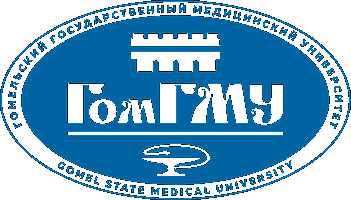| dc.contributor.author | Kozich, Zh. M. | |
| dc.contributor.author | Smirnova, L. A. | |
| dc.contributor.author | Martinkov, V. N. | |
| dc.date.accessioned | 2021-05-03T08:52:56Z | |
| dc.date.available | 2021-05-03T08:52:56Z | |
| dc.date.issued | 2021 | |
| dc.identifier.citation | Kozich, Zh. M. Role of the bone marrow microenvironment in tumor transformation of plasma cell dyscrasias / Zh. M. Kozich, L. A. Smirnova, V. N. Martinkov // Проблемы здоровья и экологии. – 2021. – Т. 18, № 1. – С. 14-19. | ru_RU |
| dc.identifier.uri | http://elib.gsmu.by/handle/GomSMU/8313 | |
| dc.description.abstract | Despite significant progress in the understanding of the pathogenesis of paraproteinemic hemoblastoses, these diseases remain incurable. In their development, they go through the stage of paraproteinemias, benign diseases, characterized by the detection of monoclonal paraprotein in the blood serum and / or urine, presence of clonal plasma cells in the bone marrow or in extramedullary tissues. It remains unclear why some paraproteinemias progress to multiple myeloma or other lymphoid tumors and how malignant progression occurs. An important role in the progression is played by molecular and genetic mechanisms, cytokines. Nevertheless, little is known about how the bone marrow microenvironment influences disease progression. In this review, we made an attempt to summarize the most significant biological, clinical characteristics on the course of paraproteinemias and the role of changes in the bone marrow microenvironment that contribute to malignant transformation. | ru_RU |
| dc.description.abstract | Несмотря на значительные успехи в понимании патогенеза парапротеинемических гемобластозов, эти заболевания остаются неизлечимыми. В своем развитии они проходят стадию парапротеинемий — доброкачественных заболеваний, характеризующихся появлением моноклонального парапротеина в сыворотке крови и/или моче, наличием клональных плазматических клеток в костном мозге или расположенных экстрамедуллярно. Почему некоторые из парапротеинемий прогрессируют до множественной миеломы или других опухолей лимфоидной природы и как происходит злокачественное прогрессирование, все еще во многом неизвестно. Тем не менее установлена важная роль цитокинов и микроокружения костного мозга при прогрессии заболевания. В этом обзоре мы обобщили наиболее актуальные сведения о роли изменений в микроокружении костного мозга, способствующих злокачественной трансформации. | |
| dc.language.iso | en | ru_RU |
| dc.publisher | ГомГМУ | ru_RU |
| dc.subject | monoclonal gammopathy of undetermined significance | ru_RU |
| dc.subject | bone marrow microenvironment | ru_RU |
| dc.subject | malignant transformation | ru_RU |
| dc.subject | парапротеинемии | ru_RU |
| dc.subject | множественная миелома | ru_RU |
| dc.subject | моноклональная гаммапатия неуточненного значения | ru_RU |
| dc.subject | микроокружение опухоли | ru_RU |
| dc.subject | злокачественная трансформация | ru_RU |
| dc.title | Role of the bone marrow microenvironment in tumor transformation of plasma cell dyscrasias | ru_RU |
| dc.type | Article | ru_RU |
| dc.identifier.doi | https://doi.org/10.51523/2708-6011.2021-18-1-2 | |
